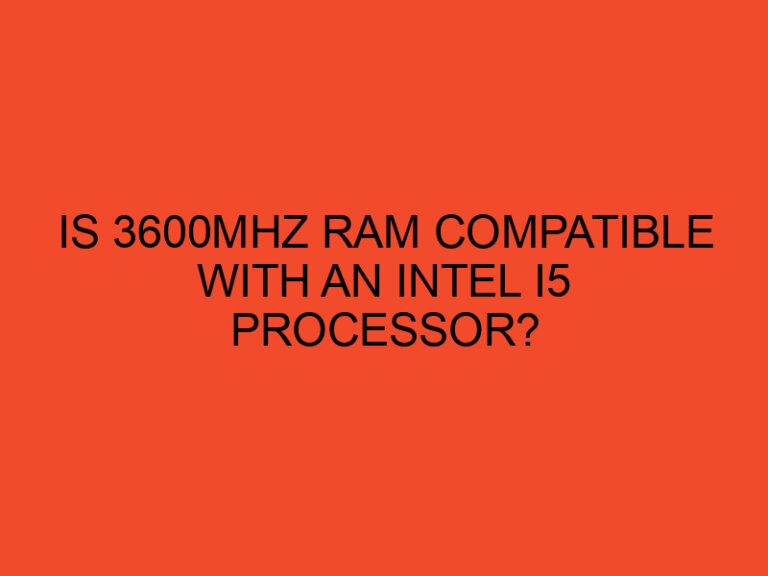In the world of computer hardware, motherboards play a crucial role in providing connectivity and communication between various components. The North Bridge is an essential part of the motherboard responsible for handling the high-speed communication between the CPU (Central Processing Unit) and other major components. Among the various slots found on a motherboard, there is one specific slot that has direct access to the North Bridge. In this article, we will explore this motherboard slot and its significance in the overall performance of a computer system.
Table of Contents
- Understanding the North Bridge
- Different Motherboard Slots
- The PCI Express x16 Slot
- Advantages of the PCI Express x16 Slot
- Limitations of the PCI Express x16 Slot
- Other Motherboard Slots
- Comparing the PCI Express x16 Slot with Other Slots
- Compatibility and Expansion Options
- Choosing the Right Motherboard Slot
- Factors Influencing Slot Selection
- Gaming and Graphics Performance
- Upgrading and Future-Proofing
- Best Practices for Utilizing the PCI Express x16 Slot
- Overclocking and Cooling Considerations
- Conclusion
- FAQs (Frequently Asked Questions)
Understanding the North Bridge
The North Bridge, also known as the Memory Controller Hub, is a critical component of the motherboard. It acts as an interface between the CPU and the memory, as well as other high-speed peripherals. The North Bridge plays a vital role in managing data transfer and optimizing system performance.
Different Motherboard Slots
Motherboards feature various slots to accommodate expansion cards and peripherals. These slots include PCI, PCI Express, AGP, and RAM slots. Each slot has its own purpose and characteristics.
The PCI Express x16 Slot
The PCI Express x16 slot is the primary slot that provides direct access to the North Bridge. It is designed specifically for high-performance graphics cards, enabling them to communicate directly with the CPU through the North Bridge. This slot offers higher bandwidth compared to other slots, allowing for faster data transfer rates and improved overall system performance.
Advantages of the PCI Express x16 Slot
The PCI Express x16 slot offers several advantages, making it the preferred choice for graphics cards and other high-bandwidth devices. Some of the benefits include:
- Enhanced graphics performance: The direct connection to the North Bridge ensures faster data transfer between the graphics card and the CPU, resulting in improved graphics rendering and gaming performance.
- Scalability: The PCI Express x16 slot allows for multiple graphics cards to be installed in a system using technologies like SLI (Scalable Link Interface) or CrossFire, providing even more graphics processing power.
- Future-proofing: The PCI Express x16 slot is widely adopted and supported by modern motherboards, ensuring compatibility with future graphics card advancements.
Limitations of the PCI Express x16 Slot
While the PCI Express x16 slot offers numerous advantages, it’s important to consider its limitations as well. Some of the limitations include:
- Limited expansion options: Since the primary purpose of the PCI Express x16 slot is to accommodate graphics cards, it may limit the availability of other slots for expansion cards such as sound cards, network cards, or RAID controllers.
- Bandwidth sharing: When multiple PCI Express x16 slots are present on a motherboard, the bandwidth may need to be shared among the installed devices, potentially impacting performance.
Other Motherboard Slots
Apart from the PCI Express x16 slot, there are several other slots found on motherboards, each with its own purpose and compatibility. These include PCI Express x1 slots for slower expansion cards, PCI slots for legacy devices, RAM slots for memory modules, and M.2 slots for high-speed storage devices.
Comparing the PCI Express x16 Slot with Other Slots
When choosing a motherboard slot, it’s essential to consider the specific requirements of the installed devices. The PCI Express x16 slot excels in delivering high-bandwidth and low-latency communication, making it ideal for graphics-intensive applications. Other slots, such as PCI or PCI Express x1, are better suited for devices that don’t require as much bandwidth.
Compatibility and Expansion Options
Before selecting a motherboard slot, it’s crucial to ensure compatibility with the desired expansion card or peripheral. Checking the motherboard’s specifications and the device’s requirements will help determine the appropriate slot to use.
Choosing the Right Motherboard Slot
Choosing the right motherboard slot depends on the intended purpose of the system and the devices that will be installed. If gaming or graphics-intensive tasks are a priority, the PCI Express x16 slot is the recommended choice. For other expansion cards or peripherals, alternative slots should be considered based on their compatibility and performance requirements.
Factors Influencing Slot Selection
Several factors influence the selection of a motherboard slot, including:
- Purpose of the system: Gaming, multimedia, workstation, or general-purpose usage.
- Expansion requirements: Number and type of expansion cards needed.
- Future upgrade possibilities: Consider the potential need for additional devices in the future.
- Budget: Balance the cost of the motherboard and expansion cards with the desired performance.
Gaming and Graphics Performance
The direct access provided by the PCI Express x16 slot significantly impacts gaming and graphics performance. It allows for faster data transfer between the graphics card and the CPU, resulting in smoother gameplay, higher frame rates, and better visual quality.
Upgrading and Future-Proofing
Choosing a motherboard with an appropriate slot, such as the PCI Express x16, ensures the system can accommodate future upgrades and advancements in graphics technology. This future-proofing capability allows for extended usability and compatibility with new graphics cards.
Best Practices for Utilizing the PCI Express x16 Slot
To maximize the benefits of the PCI Express x16 slot, certain best practices should be followed:
- Keep the slot and graphics card clean from dust and debris for optimal performance.
- Ensure proper cooling for the graphics card, as it tends to generate significant heat during operation.
- Install the latest graphics card drivers and keep them up to date for improved stability and performance.
Overclocking and Cooling Considerations
Overclocking the graphics card or CPU can lead to increased heat generation and power consumption. Adequate cooling measures, such as installing additional fans or a dedicated cooling system, should be implemented to maintain stable performance and prevent overheating.
Conclusion
The motherboard slot that has direct access to the North Bridge is the PCI Express x16 slot. This slot plays a crucial role in facilitating high-speed communication between the CPU and graphics card, resulting in improved gaming and graphics performance. When selecting a motherboard and considering expansion options, it is essential to choose the appropriate slot based on the intended purpose and device compatibility.
FAQs (Frequently Asked Questions)
Can I use the PCI Express x16 slot for non-graphics cards?
While the PCI Express x16 slot is primarily designed for graphics cards, it can also accommodate certain other expansion cards. However, it’s important to check the compatibility and bandwidth requirements of the specific card.
What other slots are commonly found on motherboards?
Other commonly found slots on motherboards include PCI Express x1 slots for slower expansion cards, PCI slots for legacy devices, RAM slots for memory modules, and M.2 slots for high-speed storage devices.
Can I use multiple graphics cards in the PCI Express x16 slot?
Yes, the PCI Express x16 slot supports technologies like SLI (Scalable Link Interface) or CrossFire, which allow for multiple graphics cards to be installed in a system. This provides additional graphics processing power for gaming or other graphics-intensive tasks.
Are all PCI Express x16 slots the same?
Not all PCI Express x16 slots are the same. While they share the same physical connector, the bandwidth and version of the slot can vary. It’s important to check the specifications of the motherboard to ensure compatibility with the desired graphics card.
How can I ensure optimal performance of the PCI Express x16 slot?
To ensure optimal performance of the PCI Express x16 slot, keep it clean from dust and debris, provide adequate cooling for the graphics card, and install the latest graphics card drivers. Regular maintenance and updates will help maximize the performance of the slot and the graphics card.






